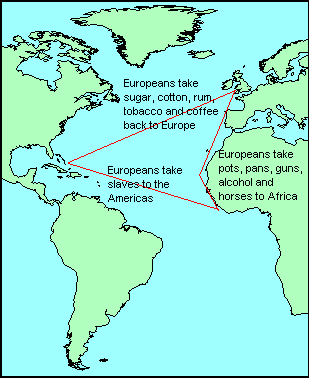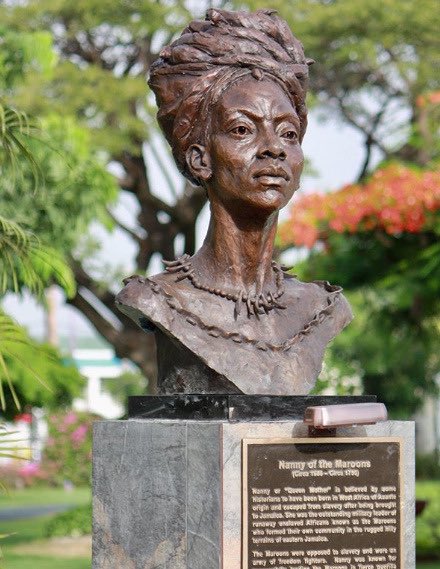Review: Freedom by Catherine Johnson
Freedom is a well-written piece of historical fiction, from author Catherine Johnson, told through the eyes of a Black slave child. It's also inspired by real historical events including the Zong slave massacre of 1781. If your school is ready but you're still unsure how to approach this controversial topic, Freedom is a child-friendly thoughtful text that deals well with the subject matter, though it does need to be contextualized.
| Photo: a replica of the Zong, © Cecily Wilson |
Positive images of African people must precede any learning about slavery
A focused historical study, for example of the kingdom of Benin, should occur prior to reading Freedom so children acquire knowledge of a significant African civilization plus lasting positive impressions of African people. This related work will also provide insight into the longstanding trade relationship between Africans and Europeans. Benin is a suitable choice as many Africans taken to Jamaica (where Freedom is partially set) were from the African West Coast. The History Association has an 'Exploring Benin' scheme of work which might aid planning.
All pupils maintain their dignity and self-esteem
When asking questions about the text try not to single out individuals, especially Black children, as this may make them feel uncomfortable. Instead, pose questions to the whole group and let learners offer a response if they so wish. Depending on the type of questioning, it might be appropriate for the whole group to write responses on whiteboards, and show them to you.
Importantly, not all of the white people in Freedom are pro-slavery. Nat's white companions Henry, Mary and Mr Kelsell reflect the conflicting attitudes of the time, and it's crucial to draw this out of the text so white children don't feel guilty or responsible for their ancestors' crimes.
'I can't imagine what it would be like to be bought or sold like meat or cattle.' He shook his head. 'I wouldn't wish that on my worst enemy.' (Henry)
Henry's reference to press-ganging could be emphasized so children realize that English seamen were also captured against their will during this period. Again, this may help Black children to not feel singled out and embarrassed.
Avoid the ‘helpless Black Caribbean/African’ deficit model
Freedom isn't focused on the negative imagery of hopeless slaves in chains. In contrast, it puts great emphasis on the busy daily activity of their lives as well as their determination towards freedom and justice. So, focus discussion on the positive attributes of the Black characters. For example, Mr Thomas's insightful wisdom shines through in the first few chapters:
'This was the way you had to speak to white people. If they thought you were simple they were less likely to hit you!' (Mr Thomas)
Also, Nat is not helpless, passive or obedient to his slave owners. On the contrary, he's courageous, resourceful, proactive and determined in his unswerving mission to escape. At the same time he is compassionate and thoughtful. Johnson has also purposely elevated the status of a Black slave boy by making him the lead protagonist, and his voice powerfully dominates the story. In fact, all of the Black characters are strongly heard throughout the book—it feels like they speak more than the whites, though I didn't actually count the lines of dialogue!
Complex cruel nature of the Transatlantic slave trade and plantation life
In Freedom Johnson describes the gruesome treatment of the enslaved people—branding, a 'chopped foot', a 'pecked off finger'—in such a matter-of-fact transient way that it feels palatable for upper KS2 readers. Also, although the book is not directly about the slave ship Zong, recollections of the slave traders' unthinkable acts onboard this ship are included. Johnson ensures the slave traders' perspectives are explained including their economic motivations:
'The more Africans we carry, the more we sell. If a few die, ten or twenty even, we still make good bounty.' (Mr Kelsell)
 |
| Triangle of trade © 2000-2020, Salem Media |
It's helpful to explore the experiences and motives of all parties involved in the transatlantic slave trade so children can gain a balanced view of history as well as develop their sense of empathy.
The consequences of slavery are deftly woven into the plot of Freedom. For example, Nat’s agonizing separation from his family provides a deeper understanding of the emotional loss of being enslaved and makes his experience more accessible. Meanwhile descriptions of Barratt Hall as 'large and fine' and the London house with its 'huge staircase' show the wealth accumulated by plantation slave owners, in Jamaica and London. We also learn about the complex contradictory social hierarchy in the 18th century which saw Black slaves wielding power over their own kind, like mean housekeeper Missis Palmer, and 'brown-skinned' people often living freely alongside shackled black-skinned slaves.
Include stories of African heritage leaders of rebellion in the Caribbean
 |
| ©Black Women Radicals |
The African Maroons are referred to several times in Freedom. Their leader, Nanny, achieved successful rebellion against English rule in Jamaica. A useful timeline is included in the book showing significant events, including the Maroon wars and Tacky's slave rebellion, up to the Abolition of Slavery Act of 1833.
Whites were not solely responsible for abolition
Later in the story, Johnson gives prominence to the crucial work of the Sons of Africa, a key pressure group of freed Black men in London, who campaigned tirelessly for an end to chattel slavery. The group included educated men like Ottobah Cuguano and Olaudah Equiano who wrote about the evils of slavery and slave trading. She also mentions Granville Sharp as a white ally of the Sons of Africa and one of the first white advocates for abolition. The inclusion of these campaigners in Freedom stresses the multitude of people who contributed to achieving the Slavery Abolition Act of 1833, not just William Wilberforce.
 |
| Ottubah Cuguano, Credit: Black Then: Discovering Our History |
Freedom addresses the sensitive subject of slavery in a balanced way without falling into the many potential pitfalls, and emphasizing the broader themes of justice, rights and liberty. Although the second half of the book is set in London Johnson does mention the huge financial gains made from slavery throughout the UK, in her endnote.
Extremely moving and excruciatingly exciting at times, Freedom is an important story for young and old that helps us to gain a deeper understanding of our complex colonial past, its consequences and lasting legacy.
Further background info:
Guide for teachers and parents
|
Genre |
Narrative: stories with historical settings |
|
Child-led
interests (EYFS) |
N/A |
|
Age
group (EYFS, KS1, KS2) |
KS2
(Y6 only) |
|
Curriculum
links/topics (EYFS/NC) |
English (Y5/6) Reading: continuing to read and discuss an increasingly wide range of fiction… increasing
their familiarity with a wide range of books including…modern fiction. Checking
that the book makes sense to them, discussing their understanding and
exploring the meaning of word in context. Asking questions to improve
their understanding. Drawing inferences such as inferring characters’
feelings, thoughts, and motives from their actions, and justifying inferences
with evidence. Discuss and evaluate how authors use language,
including figurative language, considering the impact on the reader. History:
a study of an aspect or theme in
British history that extends pupils’ chronological knowledge beyond 1066. A non-European society that provides contrasts with British
history – one study chosen from Benin (West Africa) PSHCE: freedom
and justice, rights |
|
Suitability |
whole
class text, school library, home-reader |
|
General
features |
historical facts; first-person narration; dilemma/conflict; specific historical
period; dialogue reflects opinions of the time period; plot is fictional with
some historical facts included vivid descriptions of setting and characters
that authentic for the time period |
All the Black children's books that I review are checked against my Jericho Benchmark.



Comments
Post a Comment